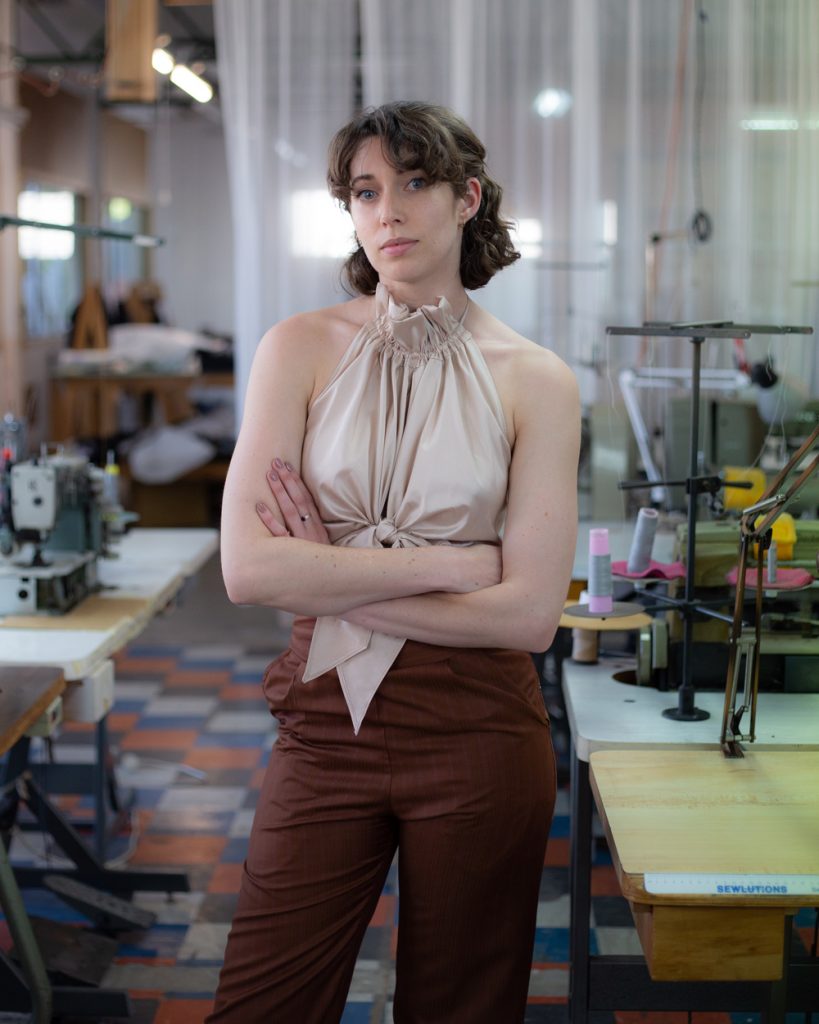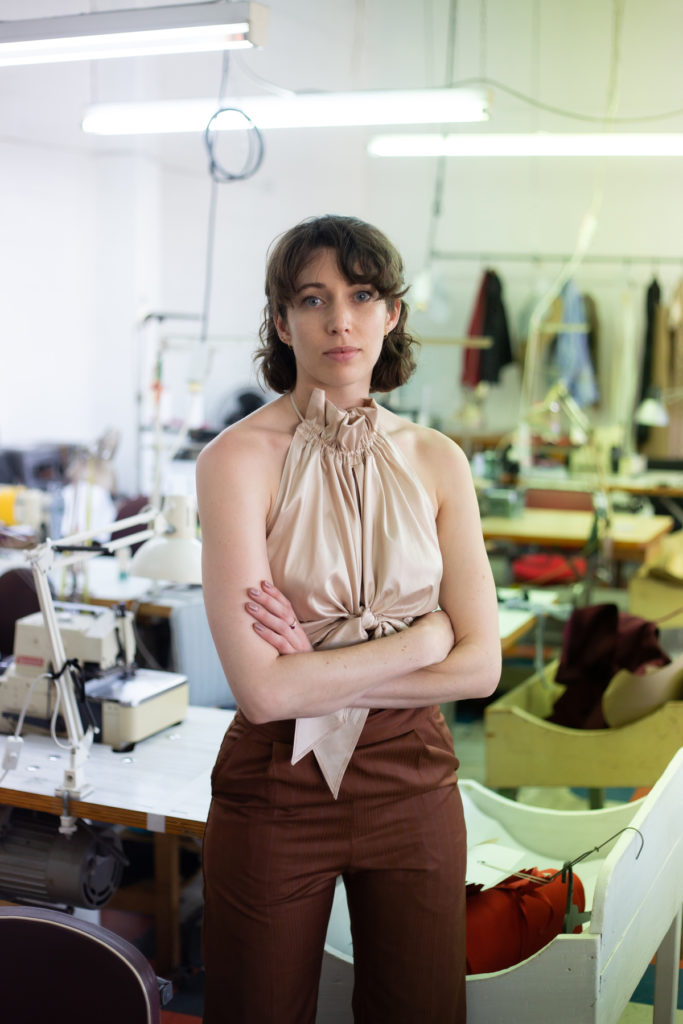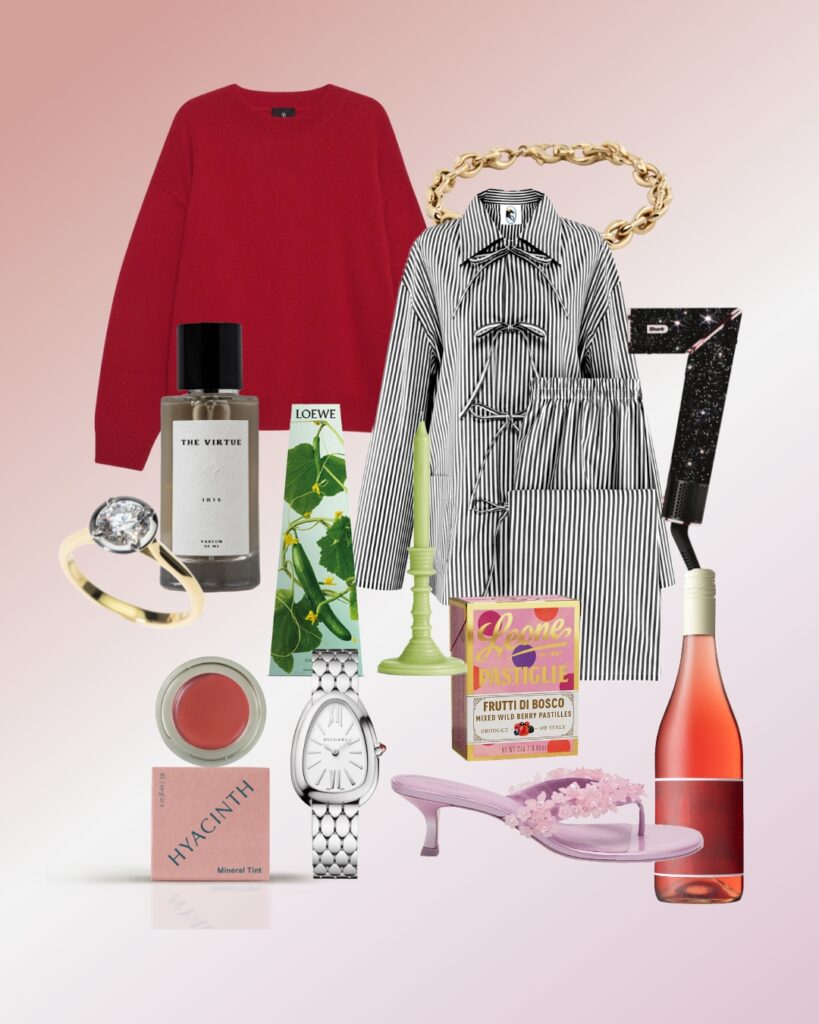From starting her own label to buying a manufacturing business, The Pattern Table, Rachel Mills has championed ethical fashion and a more holistic approach to production since the start.
She tells us why she bought a manufacturing business, what she hopes to achieve with this bold move, and what her dreams for the local industry are.
Can you explain your career path to date?
It’s hard to know when this began! I have always made clothing, for basically as long as I remember, so it was a natural progression to go on to study fashion. Before graduating, I did a few different internships to see where I felt most comfortable within the industry. After having not yet found my place after graduating, I did a short internship at Karen Walker, and specifically asked to try out as a pattern maker. I ended up landing a job there, and felt so at home within their sampling team of talented pattern makers, machinists, cutters and managers. It was such a nurturing and welcoming environment, that even though I felt underqualified, it pushed me to learn as much as I could as quickly as I could.
It was during my time here that I also launched my own small brand, and after a couple of years I decided to go out on my own, dividing my time between working as a contract pattern maker for lots of different brands, as well as working on my own brand and taking sewing and pattern making workshops. From here, I began getting more and more requests to cut and sample, but this was beyond my capacity.
What was your experience of launching and running your own label like?
Both extremely challenging and rewarding. The most challenging part was probably working by myself every day, and also coming to the realisation that I physically can’t do it all myself. I have plans to pick it up where I have left off, but in an environment surrounded by other makers.
How did you turn Rachel Mills the brand into a reality?
I just did it. I was lucky to be in a position where I have the physical skills to create the products myself, so didn’t require an enormous investment to get things underway. It also helped having been in the industry for a little while, making some good contacts, as well as having a lot of support from those around me.
When and why did you purchase The Pattern Table?
I initially started toying with the idea, because I wanted the Rachel Mills brand to be made entirely inhouse, but I didn’t have the resources to make that happen. The reason for wanting to make inhouse was because I was struggling with the lack of control and accountability over what is currently happening in the industry.
There are very few factories left, let alone audited factories, so the majority of the industry is serviced by individual outworkers, who work from their homes or garages, for very little pay. Most of the work is seasonal so very irregular, and a lot of the time they will accept prices that are lower than what anyone in New Zealand should be working for. I couldn’t find enough skilled machinists, because those who do use outworkers, are very protective about sharing their contacts, and even if I could, I didn’t have enough work yet to support them entirely. I knew I needed to do something big for that idea to become a reality.
When I started thinking about it more and more, I started reflecting on some of the roles I have really enjoyed over my career, and most of those involve being a part of a really skilled team. Although my dream was to have my own brand, I think my strengths lay in the actual making process, regardless of whether it is for myself or for another brand. Once I had decided that, I talked it over with my family, and my mum (who is a sewing teacher) decided she wanted to be a part of making it happen.
What was the process of buying an existing business like?
It was probably the most challenging thing I have ever done. I am very much a list maker; I like my processes, paper trails and ways of keeping things organised. Going into the business, it was very much the opposite of this, so the first few months were spent in survival mode, figuring out how to get everything on track, tidied up and accounted for, whilst still making sure we had enough work flowing through the business to stay afloat. We still have a long way to go, but from where we started we have come such a long way.
For readers who are unfamiliar with fashion manufacturing, what different roles are there at The Pattern Table, how do they interrelate, and what services does The Pattern Table offer?
At the moment [this interview was conducted in November 2019 – editor] we have eight staff members, including myself, although I am hoping that will continue to grow. We offer the complete service to allow brands to have a finished production run arrive in store. We start with a consultation with the designer, then create the pattern, cut and make the sample, including attachments (buttonholes, eyelets, etc) price that up for production, then we also offer production cutting and making. Our sampling team involves myself, a junior pattern maker, a cutter/workroom assistant, and enough sample machinists depending on our workload. We work together to get everything finalised to a production standard, before the final production orders arrive. The rest of the staff are the production machinists, who are very independent and such hard workers. They are so well aware of the standard of work required, and take it upon themselves to get the work done.
What is your vision for the business, and how are you making it happen?
This is so hard to get down in one lot! Basically, the plan for this business was a really selfish way for me push my agenda; to be able to make the social, ethical and environmental changes the industry needs, but from within. We first need to really establish the work we currently do, with strong relationships and trust. From there, my plan is to change the industry standards.
- I want to be able to offer stable and fair income to bring the current outworkers on board.
- I want to provide a safe working environment for everyone involved.
- I want to be able to create quality garments that will last.
- I want to give more transparency into the making side of the industry, as well as for each garment produced.
- I want to be able to offer a repair and restoration service to any garments that have been made by us.
- I want to establish ongoing relationships and services with fabric suppliers who are offering traceable and sustainable options.
- I want to find solutions to the wasteful practices of the fashion industry.
- I want to establish an apprenticeship education facility that teaches industry standard skills.
- I want to offer consumer based workshops in order to better understand how garments are made.
- I want us to be rewarded for our work in a way that is fair and enables us to tackle these things.
- I want us to be busy enough that we can be more selective, only taking on brands who align with our values.
Did you make any immediate changes to the business when you bought it, or do you plan to?
So many changes! The main one was cleaning up the work area to create more usable space, as well as implementing a system to keep track of how long we spend on each garment, at each stage as it moves around the room. We brought on more machinists, a junior pattern maker, a cutter and workroom assistant, then with a larger team, we realised that there is just not enough time in the day for me to physically hand every piece over to the next person, so now everyone knows exactly where to go to find their next piece of work.
We rebranded, have a new website in progress, and have improved systems to help meet our deadlines. One of our biggest goals, is to try to work together to plan ahead with the brands we service, to give our time when they most need it. We are still weighing up whether we will be able to proceed with a digital system, but we have not yet been able to find one that ticks all the boxes we need.
What do you love about what you do?
I love being in an environment where everyone can learn something off one another. I love seeing the machinists work together to figure out a particularly difficult style, or a patternmaker working together with a sample machinist to learn the simplest way of creating something, or even if a brand comes to us for advice on a style they are struggling to perfect. That is exactly the kind of environment I always want to be in, where everyone bounces off each other’s strengths.
What does local manufacturing look like now? Should we be worried?
I think my previous answer sums it up. I know it seems quite negative, but it is the reality. It is the result of having to compete with unethical offshore manufacturing and their low prices. As a result the majority of our local garment industry closed down virtually overnight. This created a lot of negative attitudes amongst those who have just managed to stay afloat for the last twenty years, operating at a fraction of the size of what they used to.
Yes we should be worried, and unless we can figure out how to give the industry a shakeup, my job is always going to be an uphill battle, but I am ready for it. I hold a lot of hope with the younger brands that are making their way through.
Why is it important that local manufacturing survives, and what do you think needs to happen for it to do so?
I just want to emphasize that I didn’t go into this in order to advocate for New Zealand manufacturing as such. I believe in quality and ethical manufacturing, regardless of where it is produced. I do however, believe that we have more chance of reaching ethical manufacturing in countries that have more progressive labour laws, and I think (and hope) we are on the right trajectory in New Zealand. We still have a long way to go, even within the industry, for both business clients and end customers to understand the work, time and resources that go into making a quality garment.
There is not enough sampling capacity within the fashion industry to support the garment manufacturing industry alone. In order for sampling to survive, we also need a certain amount of garments produced locally too.
It is especially important for local manufacturing to survive, or small brands wouldn’t stand a chance. More often than not, it is these smaller emerging brands, that are pushing the ethical boundaries. Brands like Maggie Marilyn, who have become so known for their ethical values, have to start somewhere. It is businesses like us who are able to offer our services, knowledge and support to them right from the early stages.
Why should young people look to fashion manufacturing jobs as a viable career path?
There is so much more to the industry than just designing, and to be completely truthful, designing is nowhere near as glamorous as it comes across. The industry is saturated with those who want to sit behind a desk, but those few roles can’t exist, unless those around them, who actually make the garments become a reality, are present and evolving.
How can fashion production in New Zealand become more sustainable – environmentally, socially and economically – and why is it important that it does?
We desperately need industry advancements! We need investment and a support system for industry as a whole, and we need a board or union who can help to push for these changes. We need software to provide the missing links in traceability and supply chains and we need more exposure around how the industry is currently run. We also need consumers to be asking more questions, in order to push brands to invest in more ethical options.
How can people support locally made fashion?
Start by understanding that where you choose to spend your money, is the most powerful way to make change. Decide what stance you have, then stick to it without being tempted. Do your research into the brands you like to follow, ask questions and maybe there are others out there you haven’t yet heard of, who are going to be the ones to make a difference. Take a risk on the smaller ones who need your support to get to where they need to be.
What is your biggest accomplishment at work or moment you’re most proud of?
I hope this is yet to come. At the moment I am feeling like I am at the bottom of a mountain, and have a very long way to go before I get to the top.
Do you have any professional or creative mentors?
I actually have a really incredible advisor. He doesn’t just go dishing out the same advice to everyone. He really takes the time to understand what your goals and business are, and figures out how to make it happen quickly. I think it is important to have this kind of interaction, as it really holds you accountable. Creatively, there are a few very generous people within the industry, who always offer an ear to discuss ideas.
What’s the best advice you’ve ever been given (by anyone)?
If you want it to happen hard enough, you will make it happen.
How do you find the ideal work/life balance?
I think this is a constant battle when owning your own business and I still don’t know the answer! It might be just accepting the fact that sometimes you will be working your butt off for weeks at a time, then when you get over that bump, not to feel guilty about taking some additional time out to recharge.
How do you handle stress?
I actually handle stress by writing everything out, putting everything into my calendar or putting my mess of thoughts onto paper. I find that most of the time when I am stressed, it is because I haven’t put aside any time to work through things.
Where do you find happiness or peace?
I’m a total introvert and my days are now so full of people that come the end of it, I am really exhausted. At the end of the day I am actually so content just having an evening to myself or with my partner, or with family, being careful not to overload myself when I am not at work.
A version of this feature originally ran in Fashion Quarterly Issue 1 2020 (on sale now). Pick up a copy now for more sustainable style inspiration.












